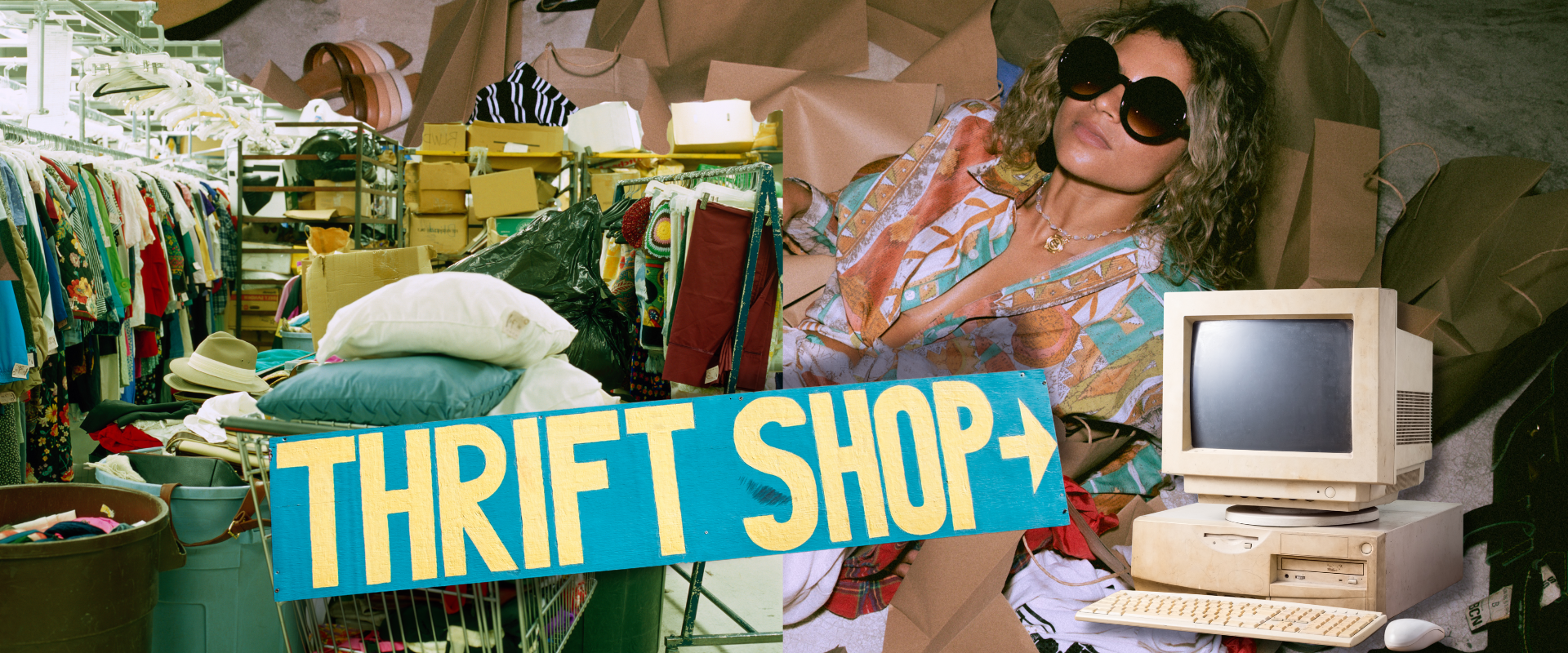
May 06, 2025
Treasure Hunt: Online Thrifting Platforms Show How AI Streamlines Searches, Engages Consumers, and Optimizes Pricing
TL;DR
- AI is quietly transforming the dynamics of modern retail, and online marketplaces for secondhand goods are at the forefront of this shift.
- Vast amounts of data make online marketplaces for secondhand goods testing grounds for AI tools that improve product discovery, operational efficiency, user experience, and counterfeit detection.
- AI tools improve product tagging, inventory categorization, and personalized recommendations, benefiting buyers and sellers by streamlining searches and optimizing pricing.
Sustainability and affordability are top priorities for Gen Z consumers — and for state legislators, such as those in California, eager to hold fashion retailers accountable for the “entire lifecycle of their products.” Secondhand marketplaces, online thrift stores, and luxury consignment all fall under “circular fashion,” a sustainable approach to clothing consumption that includes reselling to extend the lifespan of garments and reduce waste. While mainstream retailers are adapting to these demands by launching their own circular resale sites, the global secondhand apparel market is projected to reach up to $350 billion and make up 10% of the global apparel market by 2028.
Platforms like eBay, ThredUp, Depop, The RealReal, Poshmark, GoodwillFinds, and Vestiaire Collective have turned to AI to address some of the circular fashion industry’s most persistent challenges, from authentication and pricing to inventory management and customer engagement. These platforms’ investment in AI drives customer acquisition and increases profitability.
Smarter Searches, Better Finds
AI helps thrifting platforms automate product tagging and inventory categorization, creating more accurate listings and improving product discoverability. Because every item listed is unique on secondhand marketplaces, improved tagging and pattern recognition can help shoppers find similar listings when a coveted item sells. Vestiaire Collective, a luxury consignment marketplace based in Paris, uses its shopper and seller data to train AI search tools, creating “highly relevant search results.” The company’s CEO, Maximilian Bittner, says, “We are sitting on so much data. We have a huge amount of historical pieces, and that is the big driver of educating our algorithms.”
While AI brings efficiency, there’s an ongoing effort to preserve thrifting’s unique “treasure hunt” aspect. For instance, eBay maintains a “human” component in its AI-driven online marketplace by partnering with thrift-shopping influencers who engage customers with live shopping opportunities and curate drops for initiatives such as its Endless Runway and Holiday Treasures. Meanwhile, ThredUp’s AI-powered tools, such as “Style Chat,” conversationally suggest relevant brands, products, and sellers based on a shopper’s questions, search history, past purchases, and outfit inspiration.
The Thrill of the AI-Enhanced Hunt
My sister Helen, an avid thrifter, first alerted me to ThredUp’s recent improvements. She says integrating AI in online thrifting enriches the experience for budget-conscious, sustainability-minded Gen Z consumers like her. “I still like the unpredictability of hunting through inventory at brick-and-mortar thrift stores, but the updates from secondhand sites are noticeably improving the browsing and purchasing experience,” she explains. “ThredUp’s recommendation algorithm and new filtering tools allow me to sort items by composition and find great deals on ‘finer’ materials, like silk and cashmere, to ensure I purchase high-quality garments.”
Empowering Sellers with Smarter Listings
On the sellers’ side of the marketplace, AI tools can help sellers price and list goods with detailed, marketable product descriptions. For example, Depop, a British fashion marketplace, uses AI tools developed by Meta AI to analyze images and create descriptions of items as sellers upload them. Rafe Colburn, Depop’s Chief Technology and Product Officer, says this “speeds up and simplifies the [product listing] process, meaning our community can list more, sell more, and earn more while contributing to a more circular fashion economy.” He adds that AI provides “ways to understand and present products that were once only available to traditional retailers.”
Cracking Down on Counterfeits
One of the biggest challenges for the secondhand luxury market is combating abundant counterfeits. Authentication is a significant investment for platforms, and when fakes slip through, customer and seller trust erodes. In conjunction with their authentication experts, The RealReal, the world’s largest luxury consignment marketplace, uses proprietary AI tools to prioritize items for human authentication and predict counterfeit likelihood. “AI tools ensure that we keep our brand promise and things are 100% authentic…while shifting our workforce to higher-level tasks,” says Samantha McCandless, Chief Merchandising Officer of The Real Real.
Secondhand’s Place in the Retail Revolution
AI not only improves the efficiency and scale of secondhand marketplaces; it redefines the customer and seller experience. From streamlining product tagging and enhancing search functionality to fortifying authentication and automating listings, AI tools increase trust, boost seller output, and improve customer satisfaction. Secondhand marketplaces demonstrate how AI can turn complex, fragmented markets into more profitable and accessible two-sided platforms. As the public continues to debate AI and data usage, AI-driven tools are already reshaping retail and commerce.

